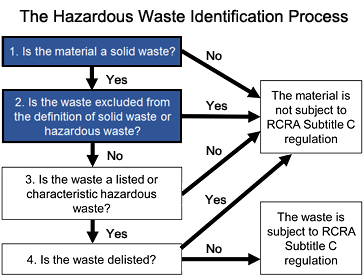The 10-Minute Rule for Reclaim Waste
The 10-Minute Rule for Reclaim Waste
Blog Article
Some Known Details About Reclaim Waste
Table of ContentsThe smart Trick of Reclaim Waste That Nobody is Talking AboutA Biased View of Reclaim WasteThe 9-Second Trick For Reclaim WasteThe Facts About Reclaim Waste RevealedThe Ultimate Guide To Reclaim WasteReclaim Waste for Beginners
Through proper fluid waste monitoring, companies can reduce energy-intensive therapy procedures and disposal expenses. They additionally get to save resources and allot them in various other pertinent processes. There are numerous guidelines that safeguard public wellness and the atmosphere. By complying with a system for managing fluid waste, companies can stay clear of pricey penalties and fines and stay clear of negative promotion.Stay in advance of laws and preserve a risk-free work environment with a digitized conformity device. Classifying fluid waste is important for efficient storage space, therapy, and disposal. Environmental, Wellness, and Safety (EHS) groups, waste management police officers, and conformity supervisors can deal with these wastes safely and successfully when they understand the basics: Generated from homes, this kind of liquid waste originates from toilets, sinks, showers, and cleaning equipments.
(https://www.40billion.com/profile/253891787)Accumulate representative examples from different points within the waste stream to guarantee precision. Liquid waste, specifically unsafe ones, presents substantial dangers during this step.
The Best Strategy To Use For Reclaim Waste
Segregate the waste based upon its kind (e.g., hazardous or non-hazardous) to guarantee suitable handling. Shop waste in protected and leak-proof containers to avoid spills throughout collection. Tag the containers properly, including the kind of waste, possible dangers, and managing instructions. Load the secured containers right into transport cars with vacuum cleaner trucks or mobile storage tanks.
Sanitation (e.g., chlorination, ultraviolet light, ozonation) and nutrient elimination (e.g., denitrification and phosphorus obliteration) are recommended under rigorous guidelines. Numerous companies broke several liquid waste disposal laws in recent years.
After choosing the most effective kind of therapy technique for liquid waste, business must find ways to take care of this appropriately. Below are some efficient methods of liquid waste management: receive most treated fluid waste that fulfills discharge criteria. describes using treated wastewater in farming lands for watering as long as the effluent meets sanitary levels per laws.
The Of Reclaim Waste
are used by sectors that generate large volumes of low-toxicity fluid waste. Shallow containers include liquid waste that is enabled to vaporize via all-natural processes. The residue left can be dealt with in garbage dumps. includes burning fluid waste at high temperatures and transforming it into gas and ash - liquid waste removal. This kind of disposal goes through stringent environmental regulations as a result of potentially hazardous exhausts.
The searchings for should be documented, examined, and kept not just for submission to regulative authorities however likewise for making renovations in the future. Usage trusted tools, approaches, and software application remedies to make certain exact and constant data collection. Keep updated on appropriate environmental laws and industry standards. Share info with pertinent stakeholders (e.g., staff members, governing federal government agencies, and neighboring communities) to keep transparency and liability.
Reclaim Waste Things To Know Before You Get This
No matter of the company dimension or sector, there are various obstacles linked with this task. Companies that can not invest in facilities should consider working together with the public industry for much better remedies (liquid waste disposal melbourne).
Liquid waste describes any kind of material in a fluid state that is excess, unwanted, or disposed of. One significant obstacle for firms is the absence of appropriate storage space facilities for fluid waste. Partnering with liquid waste solutions will significantly decrease this challenge Requirement skip bins and other containers that are typically made use of for strong waste are often insufficient for the distinct needs of dealing with fluid materials.
Getting My Reclaim Waste To Work
This blog looks into the attributes of fluid waste, reviewing how spills and contamination incidents can be taken care of successfully. It additionally explores the actions companies can require to avoid future leaks and what to do when spills inevitably take place. Liquid waste consists of any type of undesirable or surplus material that exists in a liquid form and is established for disposal.
This kind of waste arises when a product is no much longer needed, much like any other form of garbage. It is crucial to engage trained fluid waste monitoring specialists when transferring or disposing of fluid waste.

The Only Guide to Reclaim Waste
"product has to pass via a 0.45-micron filter at a pressure differential of 75 psi" in order to be specified as a fluid. Both have their distinctions.
Oil spills can result in dirt contamination and other ecological disasters. Both organizations and individuals can substantially benefit from understanding proper trash disposal processes with nine finest methods in waste administration. These approaches are straightened with the recognized waste hierarchy. Waste avoidance is the most effective technique for handling resources and lowering ecological effect.

Report this page